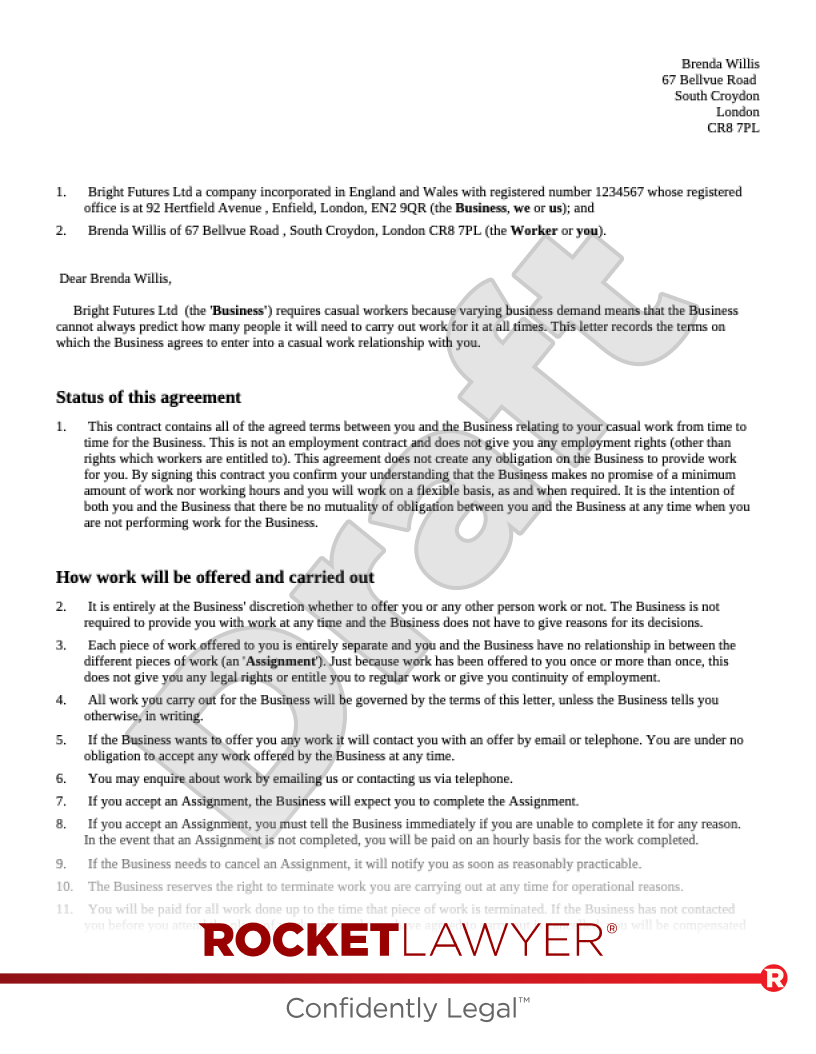What is the Relevant Period?
The Relevant Period (RP) is a period of time that is long enough to ensure that there is a fair representation of the worker's average earnings.
First, employers must identify the end date of the RP as this determines when the RP begins. This is used to calculate SSP for zero-hour workers.
The end date of the RP is the last normal payday before the first complete day of sickness.
To work out the start date of the RP, employers must select a date no less than 8 weeks before the end date. The start date is the day after the last normal payday, with that payday being at least 8 weeks prior to the end date. The RP must also be a full pay period.
How to work out the Relevant Period?
For example, If your worker's first full day of sickness is 21 January 2024, the RP for a monthly or weekly salary will be:
| Salary payment frequency |
Last payday before the first day of sickness |
RP start date |
RP |
Calculation for AWE |
| Weekly |
13 January 2024 |
18 November 2023 |
19 November 2023 to 13 January 2024 |
Total earnings for RP / 8 weeks = AWE |
| Monthly |
31 December 2023 |
31 October 2023 |
1 November 2023 to 31 December 2023 |
Total earnings for RP / number of months in the year / number of weeks in the year = AWE |
If the AWE is over the threshold, the employer will need to provide SSP. If the AWE does not reach the threshold, then the employer will not have to pay SSP.
Example A
-
John has worked for Steve for 2 years on a zero-hours contract paid weekly on a Thursday
-
John falls ill on 27 November 2023, and notifies Steve on the same day
Before Steve agrees to make any SSP payment to John, he needs to check that John's AWE meets the threshold. The first step is to identify the RP:-
because John's first day of sickness is a Monday, the last day of the RP is the last payday being Thursday 23 November 2023
-
the start of the RP is the day after the payday at least 8 weeks before the last pay date being 29 September 2023
-
therefore, the RP is 29 September to 23 November
-
Now that Steve knows the RP, he needs to calculate John's AWE. Steven knows that John was paid £1,050 for hours worked in the RP. To calculate John's AWE, Steve must divide £1,050 by 8 weeks:
£1,050 / 8 = £131.25
Therefore, John’s AWE is £131.25 which is above the threshold, so Steve is required to pay SSP.
Example B
-
Karen has worked for Matt for 6 months on a zero-hours contract paid monthly on the 15th day of the month
-
Karen falls ill on 20 November 2023, and notifies Matt on the same day
To check that Karen's AWE meets the threshold, Matt needs to identify the RP:
-
the last day of the RP is 15 November 2023 (the last payday prior to falling ill)
-
the start of the RP is 16 September 2023 (the day after the payday at least 8 weeks prior to the last payday)
-
therefore, the RP is 16 September to 15 November
Now that Matt knows the RP, he needs to calculate Karen's AWE. Karen was paid £850 for hours worked in the RP. To calculate Karen's AWE, Matt must divide £850 by the number of months in the RP (2 months), multiply that number by 12 to find the annual earnings, and then divide that amount by the number of weeks in a year (52 weeks):
£850 / 2 = £425
£425 x 12 = £5,100
£5,100 / 52 = £98.08
Therefore, Karen's AWE is £98.08 which is below the threshold, so there is no entitlement to SSP.
What about workers who have not yet had 8 weeks of earnings?
Workers who fall ill prior to 8 weeks of continuous service may still be entitled to SSP. Employers will need to calculate their AWE in the same way as above, but the RP will be the total amount of employment prior to the first day of sickness.
| Period of employment pre-sickness |
RP |
Calculation of AWE |
| Exact number of weeks |
5 weeks |
Total earnings / number of months = AWE |
| Incomplete number of weeks |
17 days |
Total earnings / number of days worked x days in a calendar week = AWE |
Example C
-
Charley has been working for Lindsay for 3 weeks and 3 days on a zero-hour contract paid weekly on a Wednesday
-
Charley falls ill on 21 November 2023, and notifies Lindsay on the same day
Because Charley has not been working for 8 weeks, the RP will be 24 days. The calculation of days will always be 7 days per week regardless of the actual number of days worked. Charley is going to be paid £465 for the days she has worked.
Therefore, Charley's AWE is the total amount of earnings divided by the total number of days worked, multiplied by 7:
£465 / 21 = £22.14
£22.14 x 7 = £155
Therefore, Charley's AWE is £155 which is above the threshold, meaning she will be entitled to SSP.




